Welcome back to the How To Play Magic series from Star City Games. If you need to catch up, you can check out the previous article on Magic Slang or start from the beginning with The Basics. Today we’ll cover the many formats and ways you can play Magic: The Gathering.
One of the best things about Magic is the variety of ways you can play the game. With a history of more than 25 years and a massive card pool, players can choose the format that best suits them. Whether it’s Legacy, where you can use almost any card ever made, or Standard, which uses only a handful of the most recent sets, choosing what formats to play allows you to curate the experience to what you like most.
Constructed and Limited
To start things off, formats are split into two categories: Constructed and Limited. In Constructed, a player builds a deck out of their collection of cards and plays against other players who have done the same. This is how most formats work. Constructed formats include Vintage, Legacy, Modern, Pioneer, Historic, Standard, Pauper, and Commander.
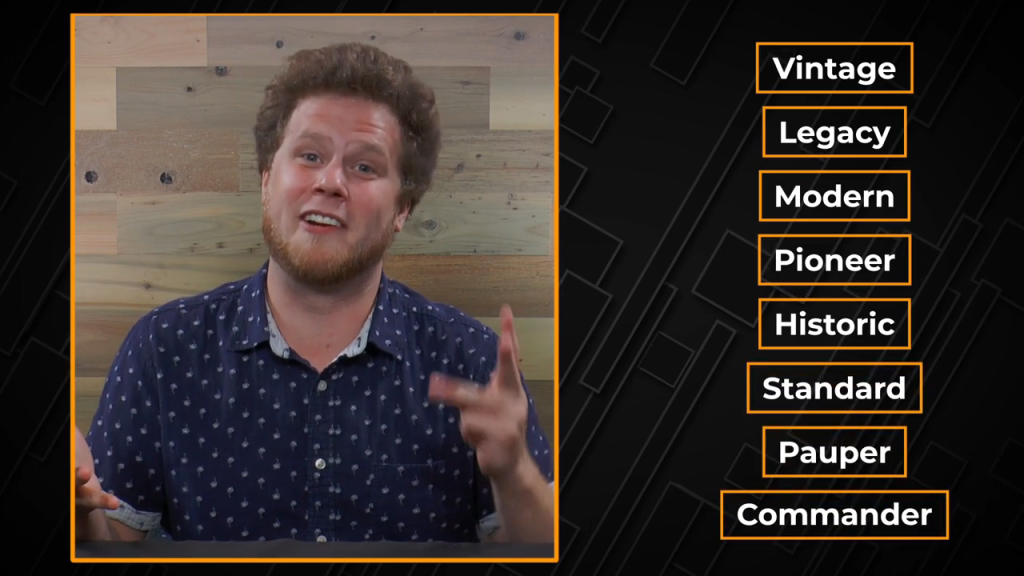
But there is also a way to play that doesn’t require bringing a deck that is ready to play, called Limited. In Limited, players open a set amount of booster packs and build a deck out of what they open and play against others who have also created a deck from packs on the spot. Limited formats include Draft and Sealed.
Constructed Formats
Now, let’s break down Constructed formats. Constructed formats primarily are separated by how many sets are legal in the format based on a starting point or date and going up to the most recent set. Except for Commander, Constructed decks have a minimum deck size of 60 cards, though you can play more than 60 if you wish, and all nonbasic land cards are limited to four copies (a “playset” in Magic slang).
Constructed decks also can use sideboards, which are fifteen extra cards you can swap in and out of your deck in Games 2 and 3 of a match in competitive play. The formats allow any of the cards in the selection of sets to be played, except for any banned cards. Certain cards get banned in particular formats for health and balance issues. The Banned Lists update regularly, so check the cards banned in a format before building a deck.
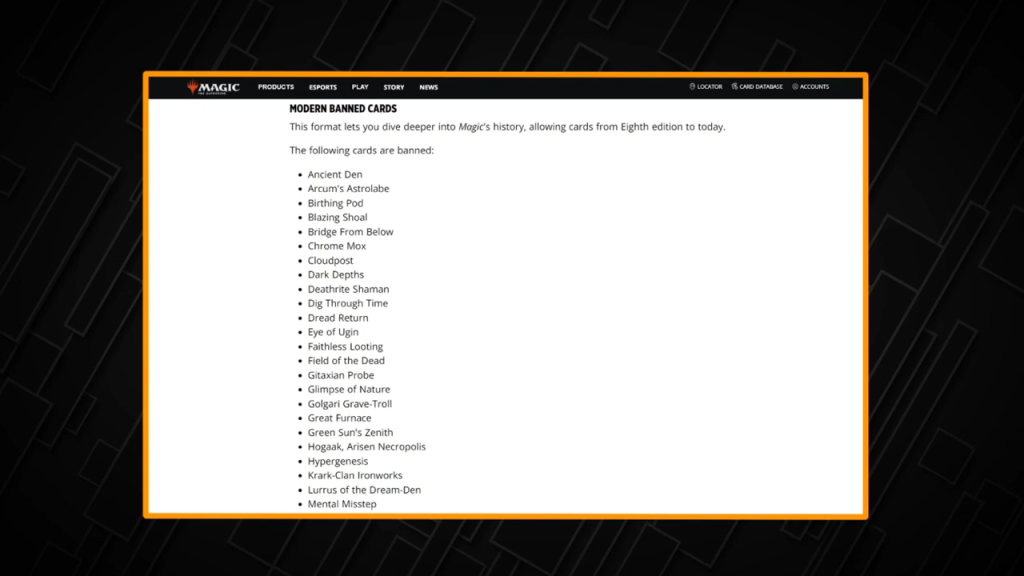
Standard
Among Constructed formats, let’s begin with Standard. Standard consists of the most recently released sets, usually ranging from four to eight sets. Standard is a rotating format, because every year in the fall, the oldest four sets rotate out, meaning you can’t use cards from those sets in your Standard decks, and they are replaced with the four new sets that are released over the course of the year.
This addition and rotation of sets keep Standard fresh and is one of the reasons it’s one of the most popular ways to play. By constantly changing, Standard makes for a great competitive format, as players have to adapt and adjust their decks as the landscape of the format shifts with new sets.
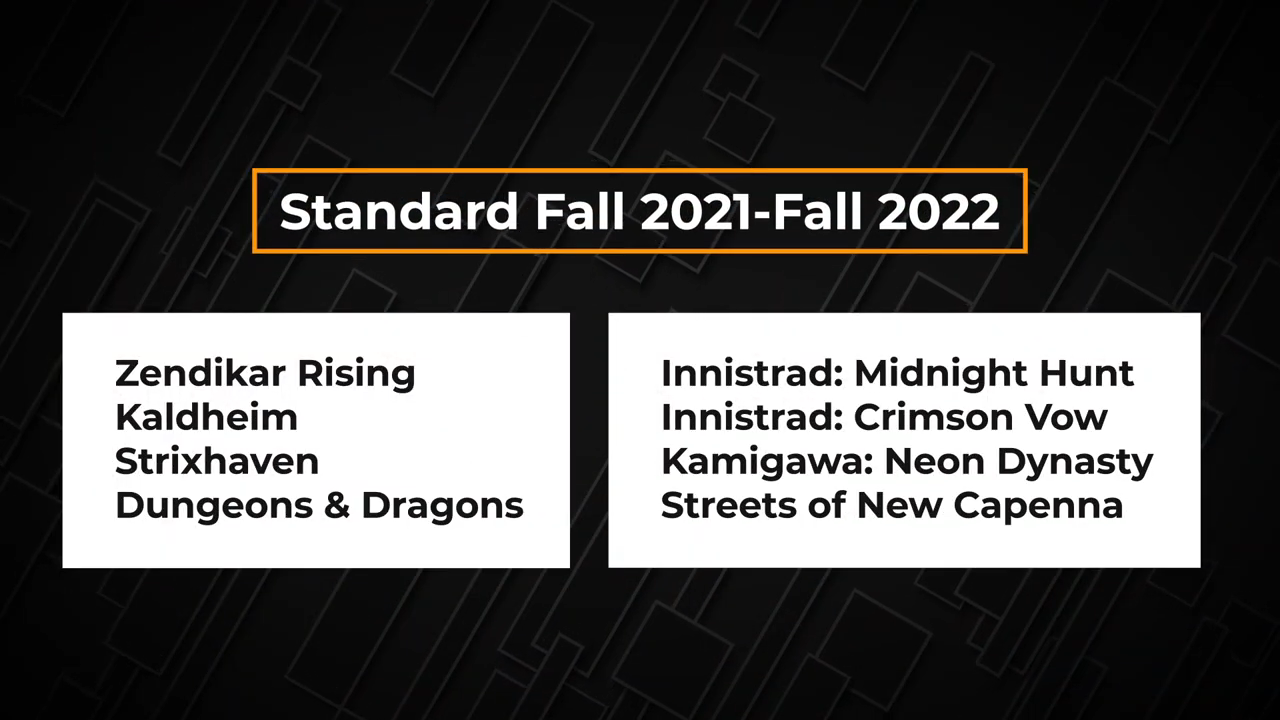
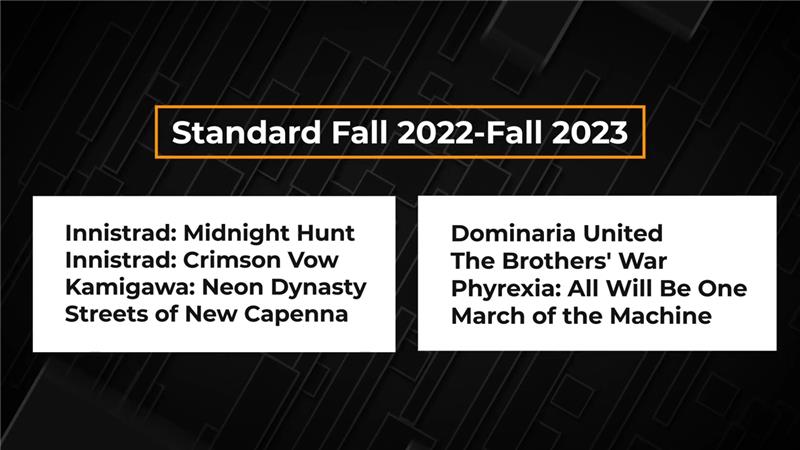
Pioneer
Pioneer consists of all sets from Return to Ravnica forward. It’s the first of many non-rotating formats covered here, meaning sets never rotate out of the format the way they do in Standard. The format will continue to grow each time a new set comes out, and the cards in the format will always be there. Non-rotating formats are great ways to use your cards that rotate out of Standard.
Modern
Modern is another non-rotating format that goes all the way back to Eighth Edition. More than seventeen years of sets make up this format defined by the fetchland and shockland manabases along with some of the most powerful spells printed in the modern era of the game.
Legacy and Vintage
Legacy and Vintage are non-rotating formats that allow you to play with cards from every set of Magic cards ever made, dating all the way back to Alpha. Almost every card ever made is at your disposal, except for a few of the extremely powerful cards being banned in Legacy, unlike Vintage, where you can play with the Power 9. The original dual lands show up in these formats, as well as the strongest cards in the game’s history.
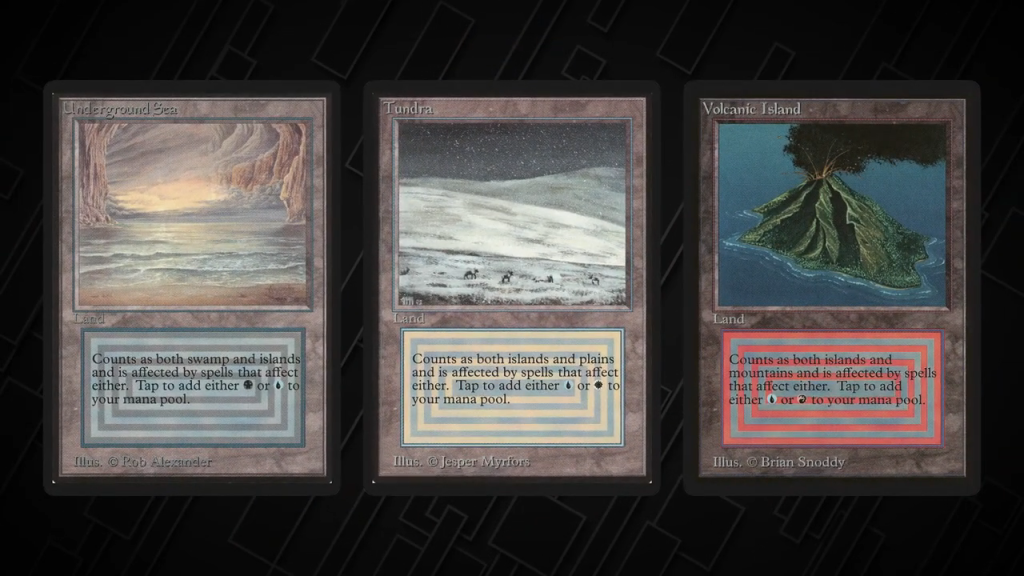
Historic
Historic is a non-rotating format that appears on MTG Arena and consists of nearly all cards on the program. It slots in between Pioneer and Standard, though Arena has supplemented the format with additional cards specifically for it, giving it a special feel.
Pauper
Pauper is a special non-rotating format where decks can only be made of commons. All sets are legal, and as long as a card was printed as a common at least once, it is fair game.
Commander
Commander is a multiplayer format where you pick a legendary creature from Magic’s history to be your “commander” and build a 99-card deck around that creature. Unlike other Constructed formats, you can only play with one copy of a card unless it is a basic land, and the cards can only consist of the colors of your commander.
Commander is most commonly played with four players and each player starts with 40 life instead of 20. Players can cast their commander from their command zone as many times as they wish during the game and battle until only one player remains standing. Commander is a casual format focused on legendary creatures and huge spells, leading to fun and unique games.
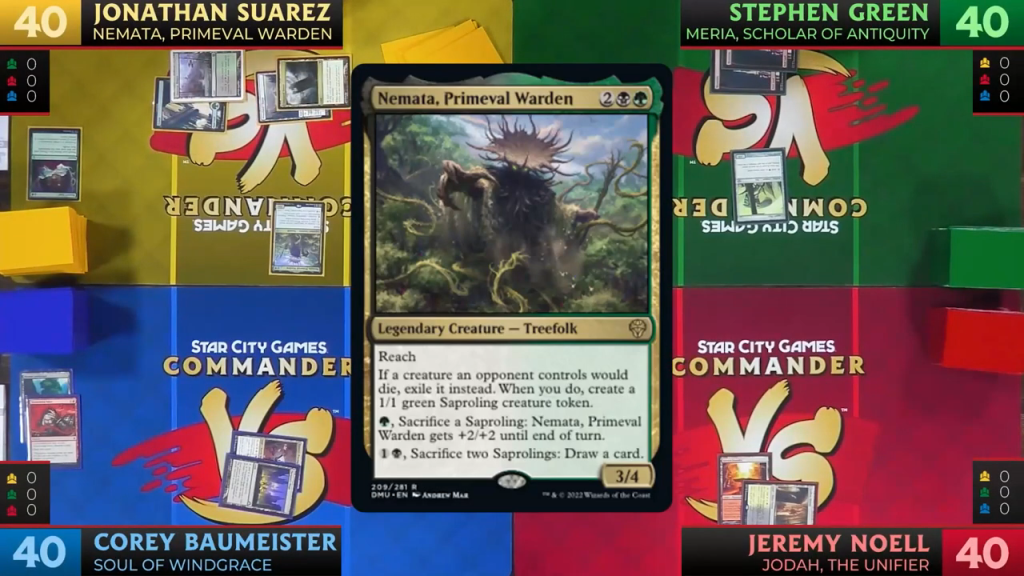
Limited Formats
With Limited, the goal is to make a minimum 40-card deck out of a set number of booster packs and basic lands. Limited is great because everyone doesn’t have to have a deck already, allowing players to build decks on the fly.
Sealed
In Sealed, or Sealed Deck, you open six booster packs and try to build the best deck possible of roughly 23 nonland cards and 17 lands.
Draft
In Draft, eight players get three booster packs, but you don’t just crack open the packs and build. Instead, each player opens one pack, selects one card, passes the pack to the person to their left, selects a card from the pack passed to them, and then continues until the pack is gone. Next, each player opens their second booster pack, selects a card, passes to the right, and continues just like before. Finally, everyone opens their third booster pack, selects a card, and passes to the left again.
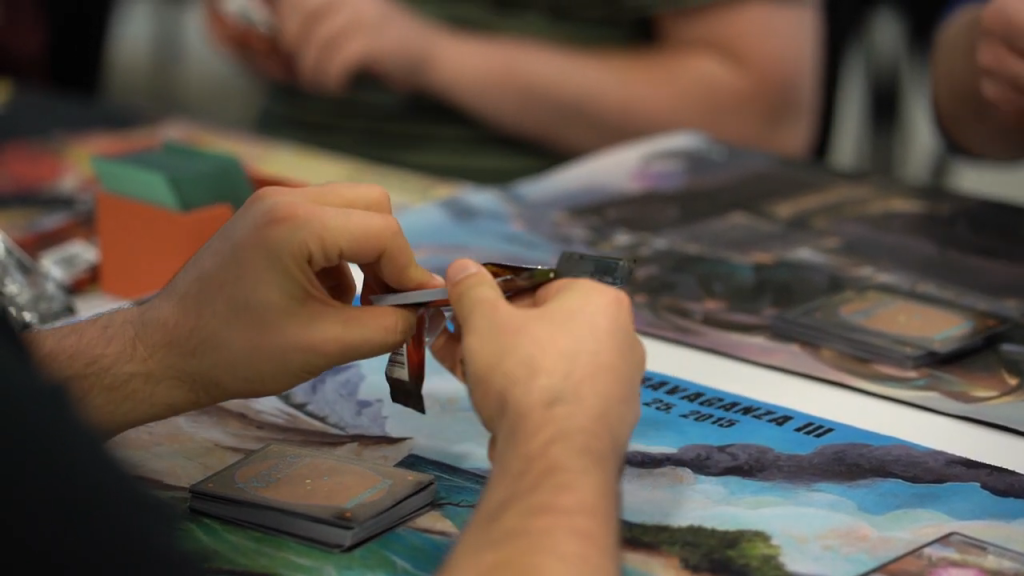
Once all cards are drafted, you build a 40-card deck out of the pool of cards you have taken from the packs, wanting around 23 nonland cards and 17 lands. Future articles will teach you how to build Sealed decks and how to draft if you’re interested.
New Formats
On top of all the established formats covered in this video, new formats are introduced occasionally from Wizards of the Coast (abbreviated “WotC”) and even from the community. Casual play, particularly kitchen-table-style Magic, leads to new and fun formats, some of which are variants of already popular formats. No matter how you are looking to play, there is a format for you out there.
There are many ways to play Magic, and we hope this article gives you an idea of where to start. Thanks for reading, and we look forward to teaching you more in our other How to Play articles from Star City Games.
Previous Article
Next Article

